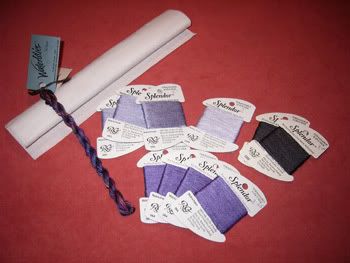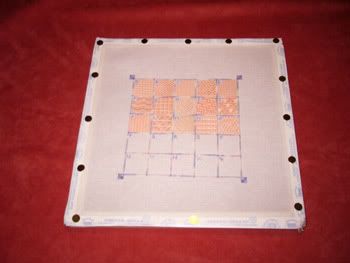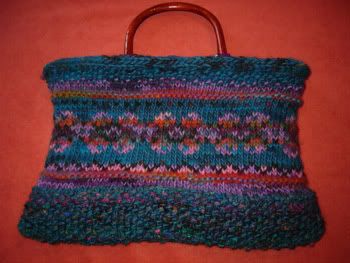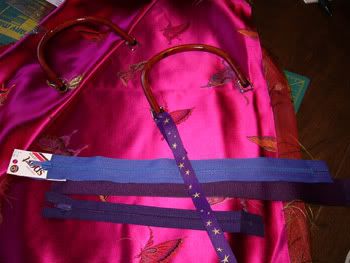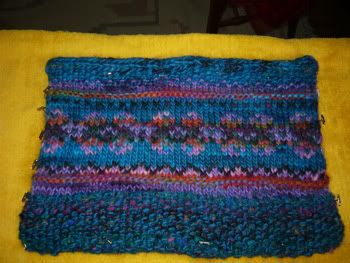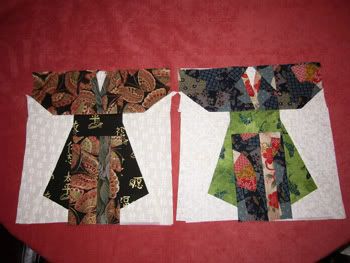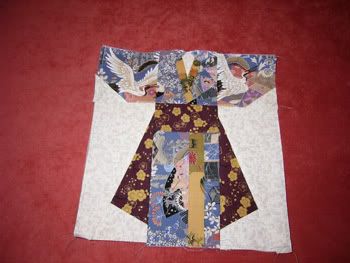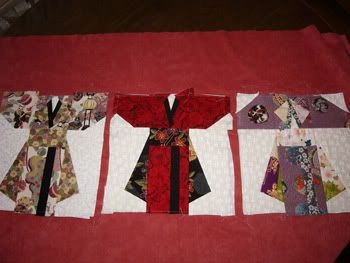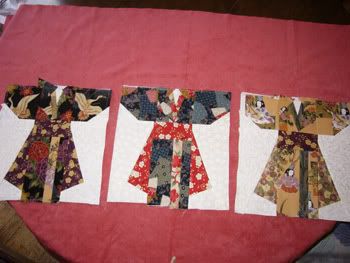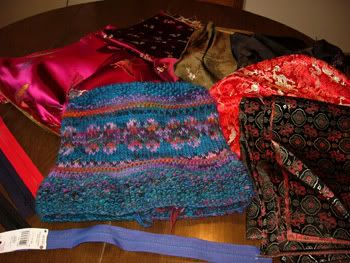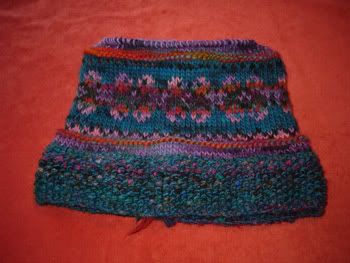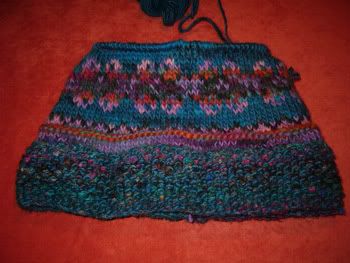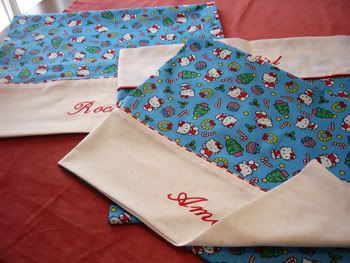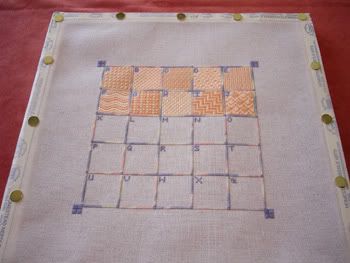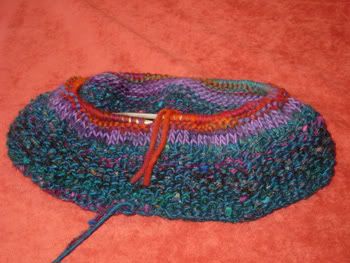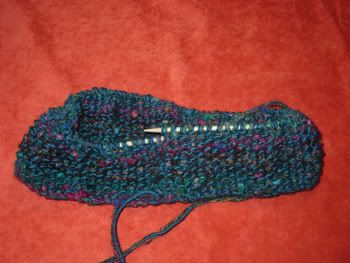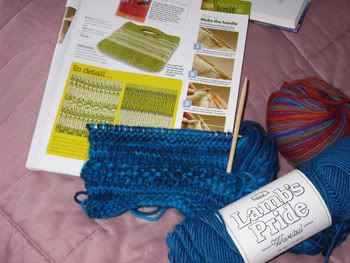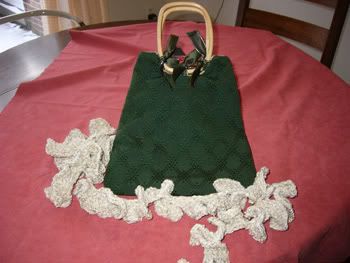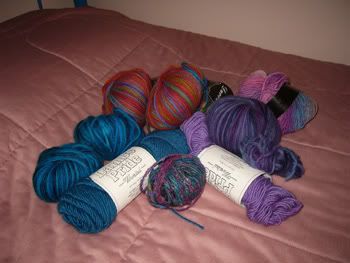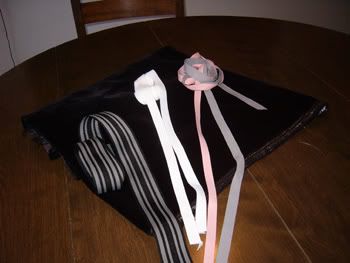Stitchin’ and Hopin’
Here’s a picture of my current stitching project:
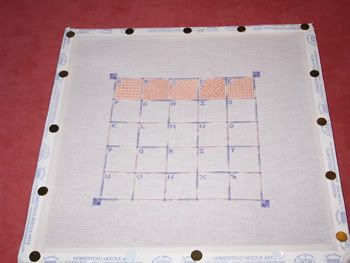
I figured I would post it as I complete each row, and then the final borders. This is a canvas work project, with each square filled with a different stitch – one that starts with the letter in the box, of course. The use of gradients of color adds a lot to the piece. I choose to use a palate of peaches with a punch of violet. Lights tend to show the stitch work better.
As with all stitching projects, this one is Long Term. The completion of the grid lines, corners, letters and the first row represents approximately thirty hours of work. Needless to say, I won’t be getting a lot done during the Knitting Olympics!
Winning StrategiesI’ve been thinking about how to approach this Olympic project just as one of the athletes would. First and foremost, I need a winning strategy. That requires flexibility, commitment, drive and endurance.
I need the right tools for the job – and I became convinced that while the 24” circular needle might suffice, I didn’t want to cast on with it and then find out it was too big or stretched out the work in an undesirable way. So, calls to five more knit shops yielded a set of long doubled pointed needles, size 9. There are only 4 in the pack, and I have a strong preference for 5, so I intend to mix in my smaller size 9 double points to supplement them. I feel comfortable doing this since I love knitting with double points and do it a lot. If you are a newer knitter or have less experience with using double pointed needles, you may wish to avoid doing this. It will require me to check the “corners” even more carefully than usual. Checking the “corners” when using double points is essential anyway, so I don’t think it will be a problem. That little tug at the end of each needle is an engrained part of my knitting rhythm with double points.
Also, the original pattern called for cotton threads to be used for this project. I have chosen to use wools to make it more challenging. That presents some finishing issues, however. The final fabric of the purse should be sturdy. The wool may be less sturdy than the cotton, however, I intend to line the bag, thus giving it more substance and support than it would otherwise have. I won’t make the decision on what kind of fabric to use until the bag is complete, or nearly so.
While the lining will support the bag shaping, and hopefully prevent any stretching, that will not help for the self handles - which I could also back with lining for support, but it might look odd. In thinking about this part of the challenge I think there are quite a few choices to deal with it. I can use three strands of wool for the final five or six inches of the bag – making the fabric a lot thicker and sturdier. This might be enough to make the knitted handles workable. I may also put in a strengthener thread, just like we use for sock heels and toes.
There is, however, another solution should the fabric prove too stretchy to be useful for handles. I can make the bag without handles (stopping the knitting when the bag's proportions are pleasing to my eye) and then use a purchased plastic or bamboo handle. It would be a simple thing to attach this when I insert the lining with either tabs or ties.
Competitive SpiritThis is an important quality for the Knitting Olympics. It should keep us knitting when we have the inclination to stop, and keep us striving until we meet our ultimate goal: a finished project.
While it will be fun and interesting to read about other entrants’ progress online, it should not impact our own performance. We are, just as the best speed skating sprinter, competing against the clock – or in our case, the calendar!
Best of luck to all of the Knitters who entered. Success means you will have a completed project at the end of 16 days. That alone is reason enough to compete!
If all else fails, I can felt my project into a cell phone case! LOL
Off to do warm up exercises! I’ll be casting on tonight during the Opening Ceremonies from Turin.
